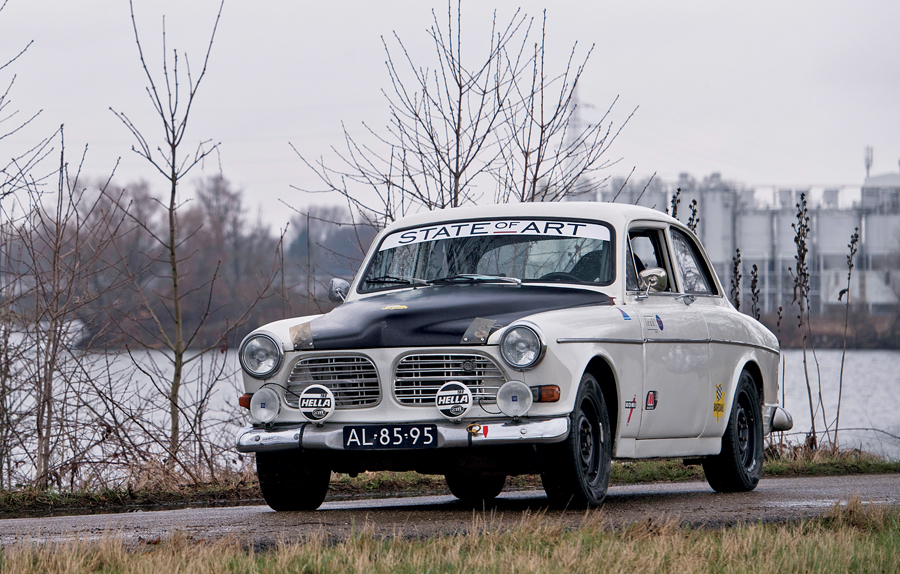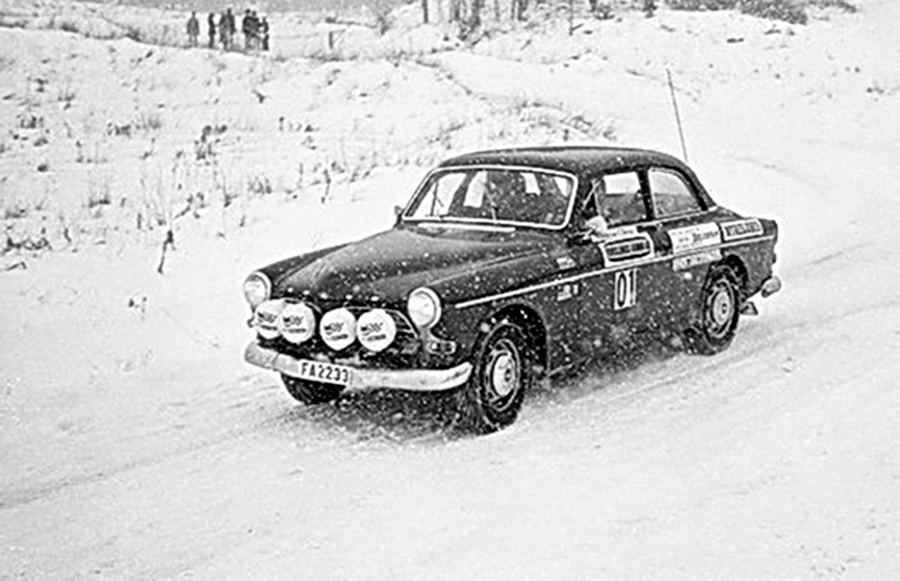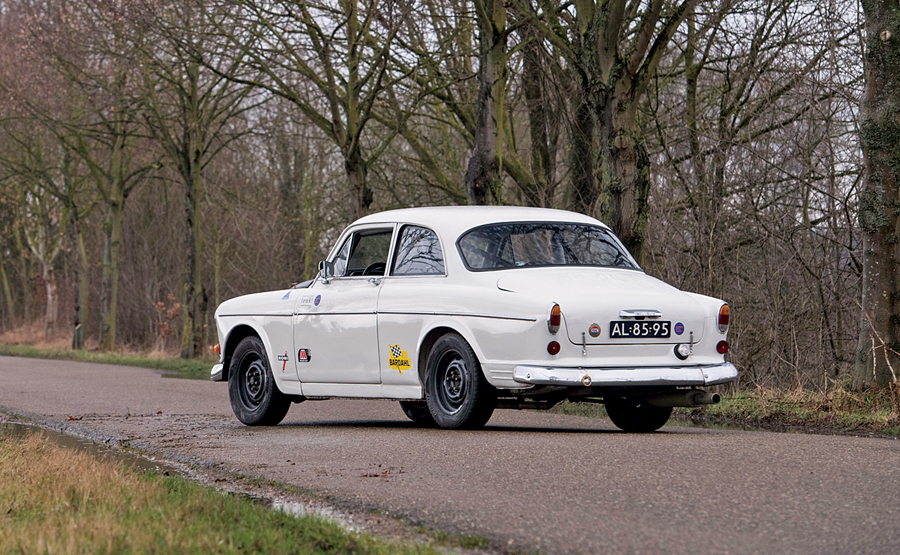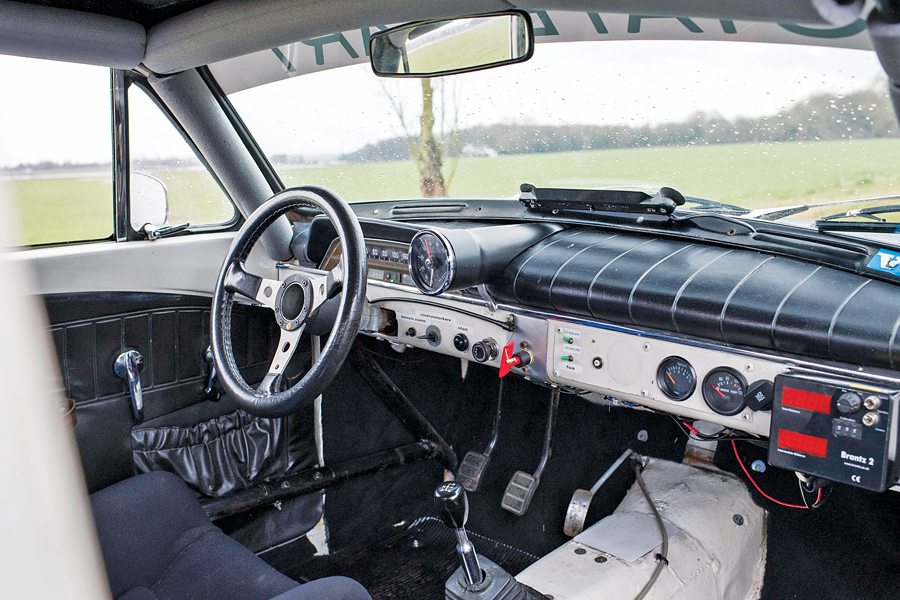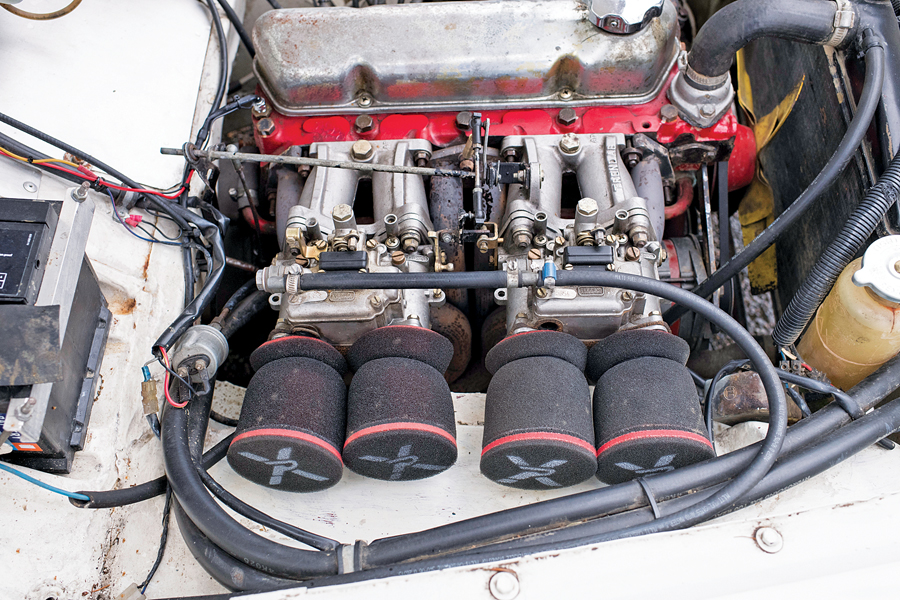SCM Analysis
Detailing
| Vehicle: | 1970 Volvo 122S Amazon Group 2 rally 2-dr sedan |
| Years Produced: | 1956–70 |
| Original List Price: | $2,800–$3,300 |
| SCM Valuation: | $14,820 (for 122S race or rally cars) |
| Chassis Number Location: | Pre-1966 models: on the firewall, between the battery box and the heater. It is often hard to see through the heavy layer of paint. 1966-and-later models: on the air intake funnel, just above the heater housing. |
| Engine Number Location: | Machined surface on the left hand side of the block, forward of the distributor |
| Club Info: | Volvo Club of America |
| Website: | http://www.vcoa.org |
| Alternatives: | 1966–70 Ford Lotus Cortina Mk II, 1963–68 Peugeot 404 rally car, 1968–73 Datsun 510 |
| Investment Grade: | C |
This car, Lot 39, sold for $28,283, including buyer’s premium, at Bonhams’ Spa Classic Sale in Francorchamps, BEL, on May 21, 2017.
Long before Volvo became known as the car that offered a high level of safety for its occupants, the company relied on advertising slogans such as “Stronger Than Dirt,” “Drive It Like You Hate It,” and “Go! Go! Go! In A New Volvo!”
These were robust cars from a country short on paved roads, where cars were parked outside in temperatures well below freezing — and often beneath a thick layer of snow between jaunts to the grocer.
Factory competition cars
Volvo was interested in more than building sturdy, never-die grocery-getters. Volvo wanted to race the Amazon, and race it they did.
The higher-performance — and fairly rare — production version of the 122 was known as the 123GT, which offered a number of improvements over the more common version. Rarer still were those the factory prepared for competition. Our subject car, VIN 131341T0345256, is one of those special cars.
The fourth digit in this car’s VIN — 3 —indicates “Special.” In this case, our subject car was one of the few Volvo pulled from the assembly line and whisked into their own in-house competition preparation shop — Volvo Competition Service, or VCS. This shop would later become Volvo’s better-known R-Sport Division.
Volvo Competition Service prepared the car for Group 2 rally use, including fitting their 160-hp engine package under the hood. This would have included an improved head, exhaust, cam and related internals, as well as a pair of side-draft Solex DDH carbs mounted to factory intake manifolds and fitted with a large, embossed air filter. The car is currently equipped with Dell’Orto DHLA carbs and aftermarket intake manifolds. These changes are period-correct, and are easier to maintain and source spares for than the Solex workalikes.
The current fuel-system pieces are completely period-correct and appropriate for the car and should pass scrutineering. The only downside to using a more readily available Dell’Orto carburetor than the Solex is that purists may not consider the car “as-delivered.”
The current carburetion setup is probably more readily serviced than a pair of the less-common Solexes would be, but one wonders why the car is no longer fitted with the correct intake manifolds. These are relatively rare, but they’re not impossible to find even now.
Initially delivered to the dealership in Vetlanda and campaigned by their sales manager in the early 1970s, the car remained in competitive use until receiving a substantial restoration in the late 1990s. After that, the car saw very little use until its recommissioning last year.
Remarkably preserved and restored to an authentic and fully usable standard, this 122 has enjoyed a long life in its intended use. It is certainly among the best remaining factory-tuned cars.
Given its unique and well-documented history, this Volvo represents a functional piece of automotive history.
A once and future racer
In its current form, complying with its original Group 2 specifications and with an FIA-compliant roll cage and other safety equipment, this Amazon would be at home in a variety of rally events in Europe. It is also welcome at many vintage events in the United States.
With some minor tweaks, the car could be a contender in endurance events such as the Chihuahua Express or La Carrera Panamericana.
Buying a complete car is usually far more affordable than preparing one yourself, and this Volvo is no different.
This car was a very good value for the buyer — the purchase price for this car isn’t out of line for a standard 122 with similar modifications. Given the price point, the history and the utility offered, the very best use of this Volvo will be to continue to fully campaign — and enjoy it. ♦
(Introductory description courtesy of Bonhams.)
